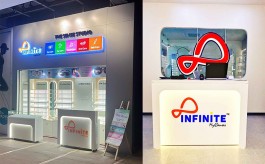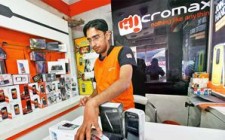Most new consumer goods bomb, says Nielsen report
By Dinesh Jain | Vjmedia Works | June 26, 2014
Only 10 per cent of the 15,000-20,000 fast-moving consumer goods (FMCG) launched every year succeed in the Rs 2 lakh crore market
 Only 10 per cent of the 15,000-20,000 fast-moving consumer goods (FMCG) launched every year succeed in the Rs 2 lakh crore market, according to analysts tracking the sector.
Only 10 per cent of the 15,000-20,000 fast-moving consumer goods (FMCG) launched every year succeed in the Rs 2 lakh crore market, according to analysts tracking the sector.Clutter-breaking products or innovations in a year are only 0.2 per cent of all launches, a recent Nielsen study found. The report analysed product launches of 2011, their success over three years, and reported 31 of the 14,509 products introduced that year were received well by consumers. The rest sank without a trace.
Abheek Singhi, senior partner and director of the Boston Consulting Group (BCG), believes the reason for the failure lies in too many me-too products. "For a product to stand out, it has to have a tangible benefit or a big hook that draws consumers. Quite often, that is not there, leading to this low rate of success," he said.
Abneesh Roy, associate director of research into institutional equities, at brokerage house Edelweiss, said most FMCG product launches were variants or extensions of existing products, which hardly left room for differentiation. "There is also a need to devote greater attention and tweak product design, strategy and development to help improve the success rate," he added.
Between 2011-12 and 2013-14 the country's largest FMCG company, Hindustan Unilever, cut research and development expenditure by over 50 per cent as it tried to protect margins under pressure from rising input prices and low sales.
Nestle increased its R&D expenditure two-and-a-half times between 2011-12 and 2012-13 but brought it down marginally by 1.4 per cent in 2013-14. Nestle follows the January-December calendar year. Dabur and Marico, whose 2013-14 annual reports have not been released yet, reduced their R&D expenditure by 21.8 per cent and 6.6 per cent, respectively, between 2011-12 and 2012-13.
R&D expenses for ITC, Godrej Consumer, Colgate, Emami, Britannia and GlaxoSmithKline Consumer Healthcare were not indicated in their annual reports for 2011-12 and 2012-13. Their numbers for 2013-14 are yet to be declared.
Companies argue the reason for low acceptance is reduced consumer spending on discretionary items over the recent years. "In these inflationary times, every rupee counts, so what is really needed are products that give consumers a sense they are getting value," Hemant Rupani, vice-president of sales at Britannia, said. "Companies are working in that direction. However, times are tough, most consumers are cutting back and even downtrading."
Executives from Marico and Emami said consumer research and piloting of products could improve the rate of success of new products. Saugata Gupta, managing director of Marico, in a previous conversation had said his company could devote up to a year to test market a product. Emami's Chief Financial Officer Naresh Bhansali said his company researched what works in the market. In the last six months, Emami has launched a new deodorant, hair oil and face wash.
Advertisement








